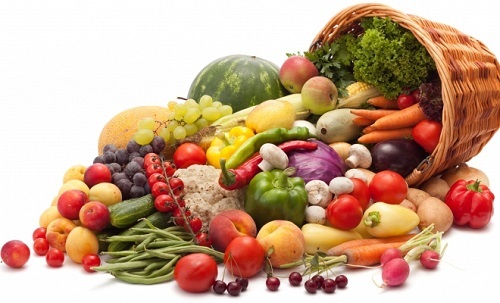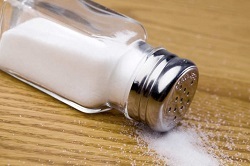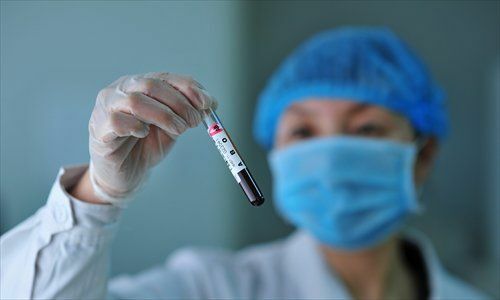Any disease of an inflammatory or infectious nature, along with basic treatment, requires a compulsory maintenance of a sparing diet for the purpose of rapid recovery. Diet in kidney disease( № 7) is based on the principle of a sharp restriction of such products, which have an irritating effect, contributing to even more inflammation of the tissues. Such a diet implies the exclusion of certain products that are strictly prohibited for consumption, and the inclusion of other products that promote the removal of substances harmful to the functioning of the kidneys.

About the principles of the diet
The main principle of a diet for any kidney disease is the maximum control over the amount of protein, phosphorus, and sodium consumed by the patient, coming with certain foods, which must be excluded from the diet. Another principle is to control the calorie content of food, as well as maintaining the optimal weight of the patient in order to minimize the burden on inflamed kidneys.
Proteins, phosphorus, sodium
Despite the irrefutable fact that protein is recognized as an important food component vital for the construction or healthy development of all parts of the body, the diet says that its unlimited amount in kidney diseases leads to the formation of slags in the form of urea, creatinine, others. Referring to nitrogenous substances, they are washed away with urine along with the kidneys. When the filtration and isolation functions caused by the inflammatory processes of the kidneys are violated, stagnation of these slags occurs in the body, leading to a strong toxic effect. Considering this, with any kidney disease it is recommended to limit the amount of consumed products containing proteins, but completely exclude them from the diet is prohibited.
As some kidney diseases lead to the fact that the process of removing salt from the body is disturbed, when calcium phosphate is stagnant, calcium is washed away, which contributes to the development of osteoporosis. Therefore, so important diet, implying control over the consumption of foods that contain large amounts of phosphorus. Sodium promotes fluid retention in the body, causing swelling, high blood pressure. Given this, the amount of sodium that comes with certain products is controlled.
Which products should be excluded?
 The diet is primarily aimed at the following: the patient must limit the consumption of salt, salty foods, products. The dietary intake per day of salt is no more than 5 grams. In those extreme cases when the patient has acute forms of inflammation of the kidneys, salt from the diet should be completely eliminated, replacing it with light spices( dill, cumin) to give the dish a taste.
The diet is primarily aimed at the following: the patient must limit the consumption of salt, salty foods, products. The dietary intake per day of salt is no more than 5 grams. In those extreme cases when the patient has acute forms of inflammation of the kidneys, salt from the diet should be completely eliminated, replacing it with light spices( dill, cumin) to give the dish a taste.
The diet for any kidney disease focuses on those foods that have a marked diuretic effect, exerting excessive stress on the kidneys. The list is determined by: watermelon, pumpkin, squash, cucumber, beetroot, lettuce leaves, citrus fruits, some medicinal herbs included in the tea.
As for the power supply itself, it is necessarily fractional, it consists of several not large in volume receptions. Each meal does not exceed 300-350 gr. The volume of fluid intake is also monitored. For a day you can use no more than 800-1000 ml of water( soups do not enter into the specified volume).
Diet for kidney diseases excludes from the diet:
- any beverages with alcohol content;
- all aerated, non-natural drinks, juices;
- bakery bakery, products, fresh bread, including black or wholemeal flour;
- acidic foods or dishes with a lot of salt, spices that have an irritating effect on the kidneys;
- strong, rich broth from meat, fish, mushrooms;
- dishes abounding with fatty varieties of fish, poultry, meat;
- sausages or cans, smoked products;
- fatty or solid cheeses;
- a number of pickled, salted vegetable products;
- salads with fresh onions, garlic;
- chocolate and confectionery products with cream, strong varieties of tea, black and instant coffee.
Which foods are recommended for use?
The diet for kidney disease includes a number of products that are soluble for consumption, without irritating effects on the kidneys.
- bread with bran, free of salt and protein;
- flour or a number of confectionery products stale baking;
- soups belonging to the category of vegetarian, excluding acidic vegetables, legumes, pasta products - similar soups should not contain salt, fill only with a small amount of butter;
- cooked with low-fat meat( including poultry, fish) - in the first days of treatment, such dishes are prohibited for consumption, are introduced later when the patient undergoes a certain stage of treatment;
- the egg is allowed to eat no more than one per day - boiled or in the form of a steam omelet;
- is allowed to eat dairy products in controlled quantities - milk, sour-milk products, fresh fat-free cottage cheese( casseroles, pudding, pies are preferred);
- to acceptable for consumption vegetables include: potatoes, carrots, beets, cauliflower, lettuce, tomatoes, parsley, dill;these vegetables are recommended to be used in boiled or fresh form, fried are not allowed;
- soft and sweet fruits, non-acid berries - it's about apples, apricots, peaches, koroloks, pears, strawberries, blueberries, others;very useful cooked from these fruits and berries compotes, fruit drinks, jellies, jams, jams, mashed potatoes;
- low-fat cheese in limited quantities.
Compliance with diet in kidney disease will prevent the development of possible complications associated with the functioning of certain organs, as well as surgical intervention. Diet is observed by the patient throughout the treatment, up to the complete cure. Full control by the doctor during the diet is necessary in order to adjust the diet, excluding or including some products. If the doctor deems necessary, relying on the results of the analysis, as well as the condition of the patient, it is possible to continue following the diet after treatment.



